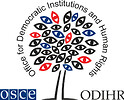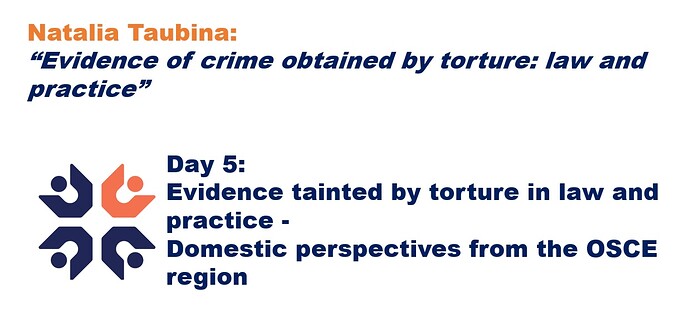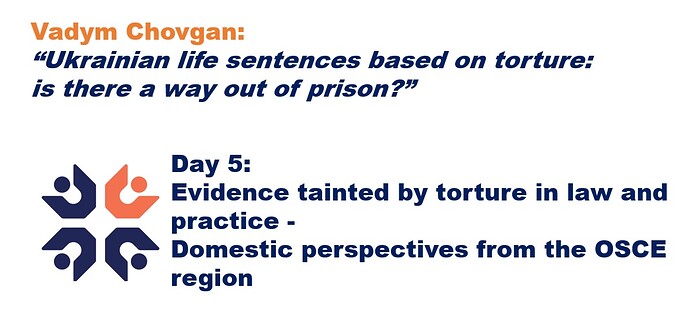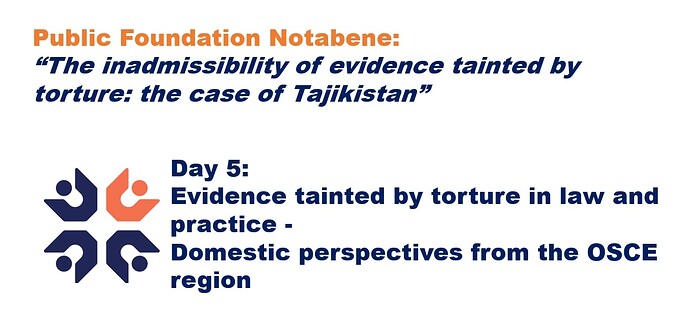Introduction
The Russian Constitution, in its Article 50, Part 2, prohibits any use of evidence obtained in violation of federal law. According to Article 75, Part 2, of the Russian Criminal Procedure Code, the following types of evidence are considered inadmissible:
-
any statement made by a suspect or accused during pre-trial proceedings in a criminal case in the absence of a lawyer, unless this statement is subsequently confirmed in court;
-
any victim or witness statement which is based on speculation, assumption or hearsay, as well as any statement from a witness for which he or she cannot indicate the source of information;
-
other evidence obtained in violation of the Russian Criminal Procedure Code.
On 29 November 2016, the Russian Supreme Court Plenary adopted its Ruling no. 55 “On Court Sentence.” This Ruling states in paragraph 1 that “by virtue of provisions of … Article 6 of the Convention for the Protection of Human Rights and Fundamental Freedoms … a sentence may only be considered lawful if adopted following a fair trial.” Let us recall that Article 6 of the Convention covers, inter alia, issues such as presumption of innocence, the right to defence, and use of evidence (including the use of evidence obtained through torture, provocation, or invasion of privacy). The Supreme Court’s Ruling states in paragraph 12: “If the defendant wants to change his or her testimony made in the presence of a defence lawyer by saying that such testimony was made under duress due to the use of illegal methods of investigation, the court must take sufficient and effective measures to verify such statement of the defendant.” The Ruling further states, “If there are grounds for verifying the defendant’s statement in the manner prescribed by Article 144 of the Criminal Procedure Code, the court should forward such statement to the head of the relevant pre-trial investigation authority. Such verification does not relieve the court from the obligation to examine the findings from this verification and reflect the court’s conclusions in the sentence” (paragraph 13 of Ruling no. 55).
Thus, the regulatory framework enables a sufficient and effective response to a defendant’s allegations of ill-treatment during the pre-trial investigation, in particular in the case of having made a confession under torture. Russian law gives courts every reason to require that the investigating authority should verify torture allegations and to examine evidence in the main trial taking into account the defendant’s claim of torture. For example, courts may exclude such evidence. However, during the Public Verdict Foundation’s 15 years of work, we have not seen a single such case.
I. What happens in practice?
Unfortunately, things look different in practice, and courts fail to protect persons subjected to torture during pre-trial investigations.
Our observations vary across courts and trials, but the one thing they all have in common is their lack of substantive response to torture reports.
Situation 1: A defendant in a criminal case states in court that he was tortured during the pre-trial investigation. Previously, he reported the torture to the investigator, and the Investigative Committee reviewed his complaint but refused to initiate a criminal case.
The court examines the findings from the torture complaint investigation. If the defendant has not challenged the investigator’s decision, the court interprets it as the defendant’s acceptance of this decision. The court then upholds the investigator’s position and finds no violation in the law enforcement officers’ conduct.
Situation 2: A defendant in a criminal case reports torture at the investigation stage, but the investigating authority refuses to initiate a criminal case into the torture allegations, and the defendant appeals this refusal in court.
If the court denies the appeal and upholds the refusal to investigate the alleged torture, then the trial court, which considers the defendant’s main case, will rely on the former court’s judgment. The trial court will say that the torture report does not require a separate consideration because it has been previously examined by a court, no crime has been found, and there is no need to institute criminal proceedings into the torture allegations.
Situation 3: At the final stage of the pre-trial (preliminary) investigation of a criminal case, the defendant complains of torture or appeals the refusal to initiate criminal proceedings into torture or challenges the investigator’s inaction concerning his torture complaint. The court, to which the defendant appeals, will say that since the complaint affects the main criminal case, it should be examined by the trial court which hears the defendant’s main case.
However, rather than return the complaint to the applicant, the court registers the complaint and makes a de jure decision on it (by stating that the complaint should be examined by the trial court that hears the main case). The trial court will then refuse to give the torture complaint a separate consideration under the pretext that another court has already examined the matter (see Situation 2). This denies the individual any opportunity whatsoever to have their torture complaint investigated.
Situation 4: A defendant reports torture for the first time during his or her main trial.
Seeing that the defendant has never raised the issue before, the court will ask why the defendant has not reported torture earlier. In most cases (we at the PVF have copies of court records in dozens of criminal trials), the defendants or their lawyers refer to “pressure from cellmates,” “threats from prison officers or investigators to impose tougher detention conditions," etc. Courts, however, dismiss such explanations and refuse to examine them critically, to initiate separate proceedings into torture reports or to forward such reports to investigating authorities for verification. Moreover, courts do not exclude as inadmissible the evidence obtained from the defendant through torture. As a result, the criminal proceedings continue uninterrupted, and the torture complaint ends up ignored altogether without affecting the final judgment in any way.
An example of this situation would be the case of defendant Zh. in Krasnoyarsk, who, prior to his testimony to the jury, was assaulted and beaten to force self-incrimination. Mentioning pressure and torture in front of jurors is not allowed – such matters are discussed in their absence. So in the absence of the jury, the defendant removed his clothes in the courtroom to show the evidence of ill-treatment, but the court failed to respond in any way. Eventually, the defendant refused to self-incriminate and pleaded not guilty. The jury acquitted him.
The Situation 1 described above where the torture victim complains during the pre-trial investigation would have been adequate – except for the widespread absence of effective investigation of torture reports in Russia.
II. Ineffective investigation
The ineffectiveness of torture investigations is due primarily to the Russian authorities’ poor performance in searching for, obtaining, and assessing evidence of torture complaints. These are the responsibilities of the investigator tasked in the Russian criminal justice system with conducting pre-trial investigations into allegations of torture.
Criminal investigators are empowered by Russian law to act independently at their own discretion; the legal theory considers this provision necessary to ensure independence of the investigation. But in the Russian law enforcement practice, this principle is often abused as a universal justification of an investigator’s inaction. For example, an investigator may fail to appoint an expert examination; when a torture victim or their lawyer appeals the investigator’s inaction in court, the latter will often disregard the victim’s arguments as to why an expert examination is essential for an objective picture of events. Usually, courts refuse to examine the investigator’s actions or inaction critically and refer to the investigator’s independence to dismiss the torture victim’s complaint.
Independent investigation – supported, at least in theory, by the legally stipulated independence of the investigator – must also follow proper practices such as the impartial assessment of available information and evidence. An investigator is required to assess evidence for reliability and significance without prejudice as to the source of this information.
In practice, however, most investigators are biased against torture victims. If torture is reported by someone accused of a crime, their statement and their version of the events often get rejected by the investigator who typically argues that “a criminal’s words cannot be trusted.”
An effective investigation is impossible unless the investigator acts promptly to identify and document available evidence. But in many cases, investigators neglect this duty in the context of torture allegations.
Adding complexity to evidence collection is the fact that virtually all such evidence is under full and exclusive control of the alleged torture perpetrators. This is described in some detail in the Russian NGO Coalition’s Shadow Report submitted to the UN Committee against Torture in 2018. An investigator tasked with verification of a torture report (alleging torture in police custody or in prison) can only use evidence to which they are given access by police officers or penitentiary/pre-trial detention personnel, including the medical staff who often fail to document physical, let alone psychological, impacts of torture, nor do they report torture to the law enforcement authorities, unlike medics in civilian hospitals.
Access to all video surveillance recordings in places of detention is exclusively at the disposal of these institutions. The administrators of such institutions often refuse to make such recordings available citing that they are “for official use only.” We have documented refusals to disclose recordings requested by investigators. Very common is the situation where certain recordings are requested in court proceedings, but prison administrations claim that they have been either damaged or deleted. In our practice, we have often noted cases where medical examinations of inmates are conducted superficially, sometimes with prison bars separating the medic from the inmate, and signs of torture are not properly documented. As a result, crucial evidence of ill-treatment is lost forever.
For example, in one of the cases assisted by PVF, we obtained video footage of a medical examination of V. after he was beaten at Penal Colony IK-1 in Yaroslavl in April 2017. It can be seen clearly in the video that V. was in a room behind bars, separated from the medic who was outside. In the video, V. shows traces left by the beatings, including huge hematomas which can be clearly seen. However, in its report to the European Court on the implementation of the interim measures indicated in V.’s case, Russia claimed that medics had not documented any injuries.
III. Fabricating false evidence of innocence
Another common problem is the use of so-called “activists” in penal colonies (prisoners who cooperate with the prison administration). These inmates are often used as alleged eyewitnesses testifying that there was no beating. Since the administrations of penitentiary institutions have full control over the evidence of torture, they use their power to put pressure on witnesses, forcing them to give false statements.
IV. Pressure on victims of torture and ill-treatment
Bringing retaliatory charges against individuals who report torture to the authorities is a widespread practice. In particular, applicants often face “false accusation” charges, in which their torture report is treated as a false accusation. The Russian NGO Coalition’s Shadow Report covers this issue extensively as well. Convicted prisoners are particularly vulnerable to false accusation charges. Indeed, they are likely to face persistent and serious threats of prosecution under this article to force them to withdraw torture complaints. But in our practice, we have also noted cases of people in the community who reported torture by police and faced charges and trials under Article 306 (false accusation). Being sentenced under Article 306 effectively deprives a person from any further opportunity to have their torture complaint investigated.
V. What has been the impact of the European Court’s judgments on the enforcement practice?
According to the Russian Criminal Procedure Code, the European Court of Human Rights (ECtHR) judgments are considered “emerging new circumstances” that warrant re-examination of prior decisions of domestic courts which are already in effect (Article 413, part 4 (2) of the Criminal Procedure Court).
Below are some observations on how the European Court’s judgments against Russia in cases alleging torture have influenced the possibility of having domestic proceedings reopened in cases where confessions under duress were used as evidence of guilt.
In the Mikheyev group of cases, the Court found Russia in violation of Article 3 (prohibition of torture) in 172 cases, and in 27 cases, the Court also found a violation of Article 6 (right to a fair trial) due to the use of confessions extracted under torture as evidence in court. According to a Memorandum prepared by the Department for the Execution of ECtHR Judgments and providing an overview of the current situation with respect to the individual measures in the Mikheyev group of cases (H/Exec(2021)18 – 16 November 2021, H/Exec(2021)18 - Memorandum - Mikheyev v. Russian Federation group of cases (coe.int)), only in one of the 27 cases, was the applicant acquitted after his prior conviction based on statements made under duress was quashed. In another case, the new proceedings were discontinued following the applicant’s death, and in yet another, the case was remitted for re-examination in 2014, but the Russian Federation has not yet provided information on the outcome. In six cases, the new proceedings upheld the original guilty verdicts and sentences. Moreover, in two cases, Abdulkadyrov and Dakhtayev, 35061/04, and Mukayev, 22495/08, the Presidium of the Supreme Court found the applicants’ reports of torture inconsistent and unconfirmed by the domestic inquiries, including the one held subsequent to the Court’s judgment. In 18 other cases, the Memorandum prepared by the Department for the Execution of Judgments indicates, “information is awaited as to whether the applicant has sought a reopening of the domestic proceedings against him.”
These statistics lead us to the following conclusions:
- the procedure whereby proceedings must be automatically reopened in cases where the Court has found a violation of Article 6 involving the use of evidence obtained under duress is not working properly;
- ECtHR applicants are not aware of the possibility to request the Russian Supreme Court to re-examine the main criminal case against the applicant;
- the outcomes of domestic inquiries into torture reports continue to have a bearing on domestic courts’ decisions.
The situation gets even more complicated when the Court finds a violation of Article 3, establishing that torture was used to extract a confession, but does not find a separate violation of Article 6. In such cases, if the applicant seeks a reopening of the domestic proceedings against him by filing a request with the Russian Supreme Court, the request will be left without consideration.
On 9 June 2011, Mr Panchenko was found guilty by the Altai Regional Court and sentenced to 24 years in prison. The verdict was based on Panchenko’s confession. On 4 February 2020, the ECtHR issued its judgment in Panchenko v. Russia (no. 20605/11) as part of the Nigmatullin and others v. Russia group of cases (47821/09 and 9 others). The Court found a violation of Article 3 of the Convention under its substantive and procedural limbs in respect of all applicants. The court found that Panchenko was tortured with a view to extracting a confession. In December 2020, the applicant appealed to the Supreme Court seeking a reopening of the domestic proceedings against him based on the Court’s judgment. On 21 January 2021, the Supreme Court sent back Panchenko’s request without consideration.
In December 2021, the Council of Europe Committee of Ministers adopted a decision on the Mikheyev group of cases, urging the Russian authorities, inter alia, to ensure that all evidence obtained under torture is prima facie inadmissible and cannot be used by prosecutors and criminal courts for the purposes of constructing criminal charges or convictions.
Conclusions
The above leads us to the following key conclusions:
- In Russia, courts fail at their task of banning evidence obtained through torture.
- Courts do not provide an effective mechanism for either responding to torture complaints or excluding evidence obtained through torture, nor do they properly consider reports of torture in assessing evidence in criminal trials generally.
- Instead of examining evidence in this category of cases, Russian courts often base their judgments on prejudice and assumptions rather than verifiable information.
- No proper system is in place for re-examination of domestic court decisions based on new circumstances, such as the finding by the European Court of Human Rights of violations with respect to domestic court proceedings in criminal cases.
Regarding the fourth point, it would be useful to discuss how it works in other countries and what needs to be done to ensure a proper system of re-examination. Also, it would be good to discuss any further steps/strategies within the framework of implementation of the individual measures to ensure re-examination of domestic decisions based on the finding by the European Court of Human Rights of violations with respect to domestic court proceedings in criminal cases.
Natalia Taubina, Director of Public Verdict Foundation
Ms. Taubina has been working in the field of human rights since 1992. The area of Ms. Taubina’s expertise is international human rights standards and mechanisms; human rights in the work of law enforcement bodies, including torture prevention; development of civil society organizations, NGO management, and evaluation.
This contribution was written in February 2022.






